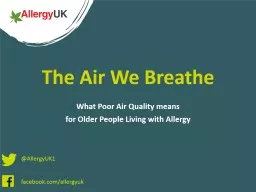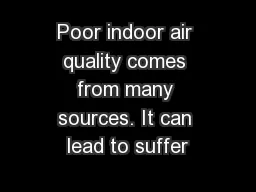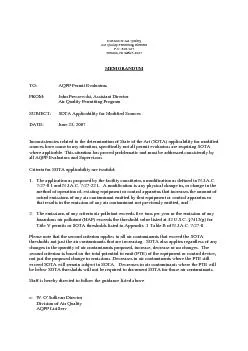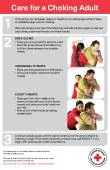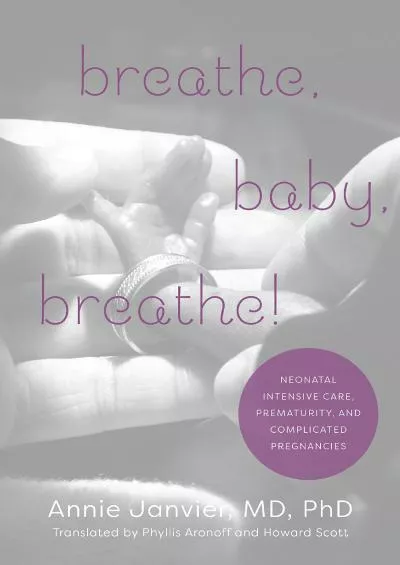PPT-The Air We Breathe What Poor Air Quality means
Author : cady | Published Date : 2022-06-28
for Older People Living with Allergy The only national charity dedicated to providing advice information and support for the 21 million people living with allergies
Presentation Embed Code
Download Presentation
Download Presentation The PPT/PDF document "The Air We Breathe What Poor Air Quality..." is the property of its rightful owner. Permission is granted to download and print the materials on this website for personal, non-commercial use only, and to display it on your personal computer provided you do not modify the materials and that you retain all copyright notices contained in the materials. By downloading content from our website, you accept the terms of this agreement.
The Air We Breathe What Poor Air Quality means: Transcript
Download Rules Of Document
"The Air We Breathe What Poor Air Quality means"The content belongs to its owner. You may download and print it for personal use, without modification, and keep all copyright notices. By downloading, you agree to these terms.
Related Documents

